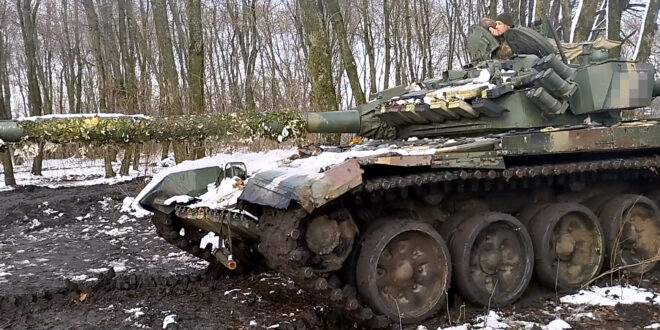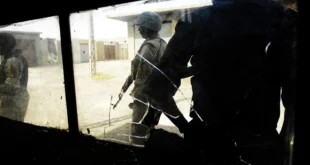by Mike Eckel/ RFE-RL
For weeks if not months, Ukrainian military and political leaders, along with some Western intelligence officials, have warned that Russia is preparing for a major new offensive. Cold temperatures had dialed down the tempo of fighting while both sides replenished their manpower and materiel, positioning equipment, digging trenches, rebuilding units — preparing for the war’s next phase.
That new offensive now appears to be under way, with Russian forces in eastern Ukraine building on months of intense localized assaults in several places in an effort to regain momentum in their sputtering, yearlong invasion.
READ MORE about the war in Ukraine
The intensifying clashes come as the February 24, 2022, invasion nears the one-year mark and Russian forces struggle to achieve even President Vladimir Putin’s least ambitious goals.
“The Russian military has likely begun offensive operations and these are early attacks and early efforts to seize positions,” Michael Kofman, a Russia director at the Center for Naval Analyses, a U.S.-based think tank, said in a podcast on February 7. “These look like the very early phases of it.”
Putin has shuffled commanders at least three times to try and improve the military’s checkered performance to date.
Ukrainian officials, Western intelligence, Russian and Ukrainian military bloggers, and other open sources all indicate that Russia has intensified assaults in multiple locations over the past week — in particular near Kreminna, in the western part of the Luhansk region, and in Vuhledar, to the south of the city of Donetsk.
This latest phase of the war may herald a return to one of the Kremlin’s original stated priorities: complete control of the Donbas, parts of which have been occupied by Russia-backed forces since 2014.
“The enemy is trying to take full control of Donetsk and Luhansk oblasts,” Ukraine’s General Staff said in a February 9 post on Facebook.
Meanwhile, there are indications that Ukraine is girding for potential offensives as well — possibly on the southern front in the Zaporizhzhya region, for instance — but they do not appear to have begun.
Here’s what you need to know about how the battlefield is evolving.
Aerial Barrage
Russia unleashed the latest in a series of missile and drone barrages across Ukraine on February 9, hitting targets like electrical grid infrastructure and heating and power plants.
The attack, which Ukrainian officials say included dozens of projectiles, is a tactic that was used repeatedly under the previous commander, General Sergei Surovikin, causing widespread power outages and heating problems as Ukrainians struggle with winter cold.
Surovikin was demoted last month, with the Kremlin handing the reins back to General Valery Gerasimov, the chairman of the military’s General Staff.
Appointed more than a decade ago, Gerasimov is an ally of Defense Minister Sergei Shoigu and is believed to be a trusted adviser to Putin.
It’s unclear whether the aerial barrage, at least the second since Gerasimov resumed command, was an action taken in coordination with the ongoing assaults in the Donbas.
The Institute for the Study of War said on February 8 that Russian forces had regained the initiative in Ukraine and had begun their next major offensive in the Luhansk region. Russia has also deployed units from at least three divisions in the fighting in the northern Luhansk region.
“The Russian offensive likely has not yet reached its full tempo,” the Washington think tank said.
Meanwhile, Ukraine’s military said on February 10 that the most active fighting was occurring in and around Kreminna, Bakhmut, Avdiyivka, Maryinka, and Vuhledar.
 Soldier of Fortune Magazine The Journal of Professional Adventurers
Soldier of Fortune Magazine The Journal of Professional Adventurers






